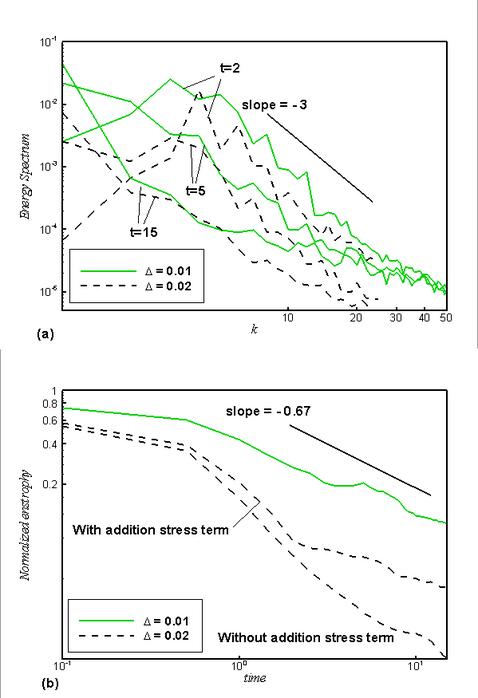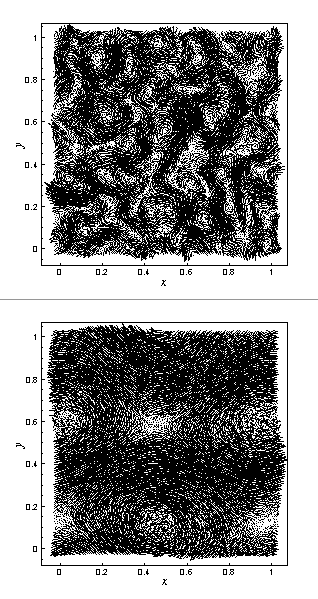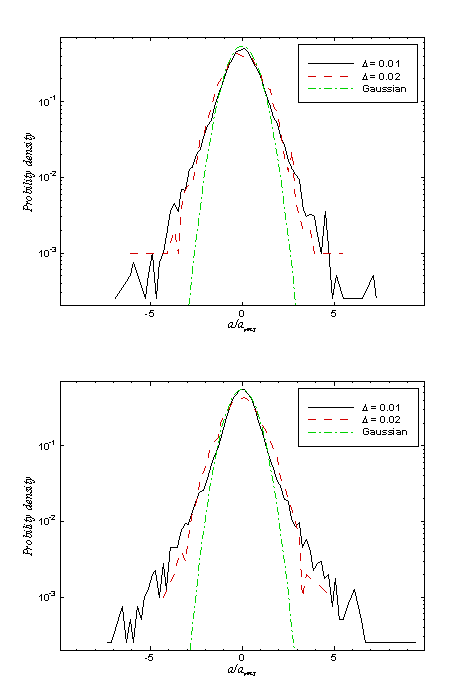A SPH model for incompressible turbulence



Many of the incompressible flow problems to which SPH has been applied are turbulent. Since the direct numerical simulation is not always feasible, turbulence modeling is required for the computational more efficient coarse-grained numerical simulation. One straightforward approach of SPH turbulence modeling is applied the turbulence models originally developed for Euelrian methods directly. Monaghan first noticed the similarity between one version of SPH called XSPH and the Lagrangian averaged Navier-Stokes (LANS-alpha) turbulence model and proposed a turbulence model specifically
for the SPH method.
In this work, a coarse-grained particle model for incompressible NS equation is proposed. This model is similar to our previous developed incompressible SPH method and the LANS-alpha turbulence model. Other than using smoothing approaches, this model obtains particle transport velocity by imposing constant sigma which is associated with the particle density, and is called SPH-sigma model. Numerical tests on two-dimensional decay and forced turbulences with high Reynolds number suggest that the model is able to reproduce both the inverse energy cascade and direct enstrophy cascade of the kinetic energy spectrum, the time scaling of enstrophy decay and the non-Guassian probability density function (PDF) of particle acceleration.